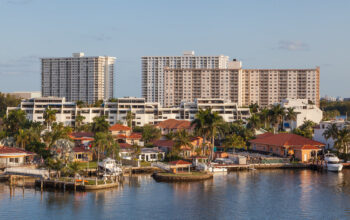Florida is one of the leading citrus-growing states in the United States. Each year, two-thirds of the nation’s crop is citrus fruit that is harvested from Florida groves. These are mostly oranges and grapefruits. There was a case in the late 1980s when, for the first time in 100 years, Florida’s entire fruit crop was killed by a cold snap. Then the farmers, whose farms are located north of the cities of Lakeland and Orlando, gave up citrus production. Yes and in the past there have been instances in the area where frozen fruit came to market, then citrus prices dropped and farmers went broke. Currently, the Florida Citrus Commission’s strict market controls help keep prices in check, even during cold winters.
Another important crop in the state is tobacco, which grows mainly in northern Florida. Tobacco cultivation began around the late 1920s, just after hordes of rodents attacked Florida’s cotton plantations and destroyed virtually the entire crop. The recognized market center for tobacco growing in Florida is the town of Live Oak.
In addition to citrus and tobacco, the heat-loving sugar cane is grown here in large quantities. The city of Clewiston, on the south shore of Lake Okeechobee, is the center of Florida sugarcane cultivation. Production of this crop was expanded after the events of 1961 – then after the Cuban revolution, the United States stopped importing sugar cane from the island.
Florida, in addition, is also one of the major suppliers of fish to the country’s markets. The main fishing ports of the state are Pensacola and Apalachicola on the Gulf coast, and Fernandina Beach and New Smyrna Beach on the Atlantic coast. And, of course, the Key West Islands – here the pink shrimp is harvested – it is considered one of the most valuable gifts of the southern seas, and its habitats stretch from Tampa to the barrier islands. In addition to shrimp, Florida fishermen supply the country’s markets with various types of fish, such as Spanish mackerel, black mullet, clams, lobsters, and crabs. But in the Gulf of Appalachicola they breed oysters. In general, sport fishing is very popular here – it can even be called the most important branch of the tourist industry in Florida, and a good source of income for the state.
About 45% of the territory of Florida is covered with forests. And if in former times the pine forests of Florida were the most important source of wood for the U.S. Navy, then since the XIX century this source was empty – it was exhausted, as the forests of Florida were practically cut down. Nevertheless, the state’s citizens planted new forests in place of the old clearcuts, and by 1940, Florida’s lumber industry was picking up again.
The tourism industry in Florida’s economy is also a major factor that generates a lot of revenue for the state. The most popular tourist centers in Florida are Miami, Miami Beach, Fort Lauderdale, Palm Beach, St. Petersburg, Panama City, and Pensacola. Also, cities that are located in national park areas. It is the tourism industry that has best influenced the development of industrial sectors of the state’s economy.



